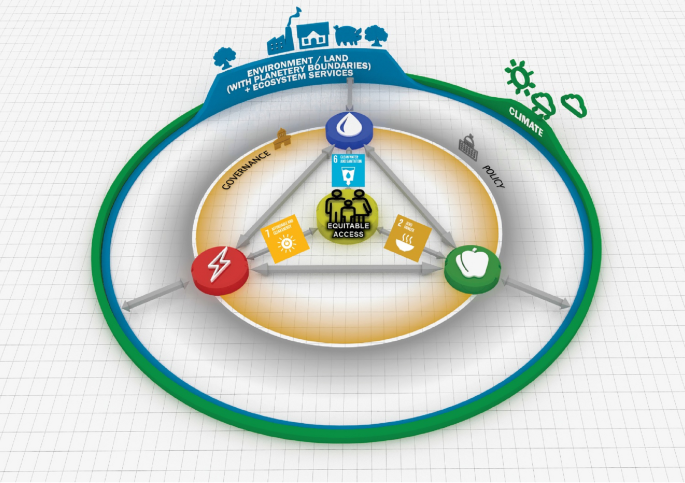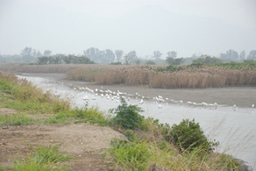How to measure the nexus?
Published in Earth & Environment, Agricultural & Food Science, and Economics
Explore the Research

An African perspective on the Water-Energy-Food nexus - Scientific Reports
Scientific Reports - An African perspective on the Water-Energy-Food nexus
There is a need to address resource security and distributional justice in developing countries. People need water, energy, and food to sustain their livelihoods, grow economies, and achieve sustainable development. The interactions between these resource sectors form the crux of water-energy-food (WEF) nexus assessments.
The WEF Nexus Index was developed to provide a tool for integrated resource management. An index mechanism was selected due to the diverse indicators within the water-energy-food nexus, which vary in units (e.g., Calories, cubic metres, and kWh) and in spatial and temporal scales. The index was developed utilising the JRC: COIN's 10-step methodology. Various journal articles support it, and a visualisation website has been designed to facilitate the use of the tool: https://wefnexusindex.org/. The WEF Nexus Index serves as a lens and an entry point into the hierarchical dataset upon which it is built. It provides a different yet complementary perspective on development through the Human Development Index (HDI). The moderate correlation between the HDI and the WEF Nexus Index implies that food and nutrition security and service delivery in terms of access to freshwater, safe sanitation, and electricity greatly catalyse human development.
The WEF Nexus Index was initially developed using national-level data for 2019 from open databases such as those provided by national statistical offices, government departments, non-governmental organisations and international organisations such as the World Bank, International Energy Agency (IEA), Food and Agriculture Organisation of the United Nations (FAO), and World Health Organisation (WHO). The inclusion–exclusion criteria for such data and indicators included availability of valid data in at least 65% of the (i) countries, and (ii) indicators. The HDI data was obtained from the Human Development Reports by the United Nations Development Programme (UNDP).
This study utilised the WEF Nexus Index to analyse the WEF nexus in 54 African nations for which sufficient data were available in 2019. Generally, African countries are performing sub-optimally in the WEF Nexus Index, ranking 44th globally. These sub-optimal performances are a key entry point for identifying challenges and planning intervention strategies for the continent and its member states. Deeper analysis at subnational levels and scales may (i) reveal spatial variations in dynamics of the WEF nexus at local scales, and (ii) inform potential for improvements in policy and practice within and between countries. At sector and indicator levels in the continent, variations exist in the security of the WEF nexus, which necessitate contextualised analysis for countries and their subnational scales. Even at the pillar and indicator level, African countries are performing poorly in all three fronts of resource security: water, energy and food.
African countries with high water availability and low water access need to invest in the appropriate water treatment, distribution and supply infrastructure, while those with scarce water resources need to optimise water use efficiency and productivity. The potential to enhance energy security lies in implementing planned power generation projects, especially renewables, at large, medium, and small scales. A low-hanging fruit for boosting power generation lies in optimising production in existing power plants through repair, maintenance and rehabilitation. Agriculture is the mainstay for sustaining livelihoods and catalysing economic growth in Africa, and its development for the production of food and fibre is inextricably connected to water and energy security. Recommended actions for enhancing food security in Africa include climate-smart agriculture (CSA), agricultural water management, and soil fertility (nutrient) management for improved yields in line with the African Union’s Framework for Irrigation Development and Agricultural Water Management (AU-IDAWM). However, in all cases, planning and implementation of interventions seeking security of water, energy and food resources need to be conducted from a nexus perspective to optimise synergies and minimize trade-offs.
Further analysis is necessary to assess the scalability of the WEF Nexus Index. For example, what additional local-scale indicators are required to ensure that its interpretation is more context-specific; or which policy outcomes meet the stated primary objective, i.e., supporting human well-being?
Follow the Topic
-
Scientific Reports

An open access journal publishing original research from across all areas of the natural sciences, psychology, medicine and engineering.
Related Collections
With Collections, you can get published faster and increase your visibility.
Obesity
Publishing Model: Hybrid
Deadline: Apr 24, 2026
Reproductive Health
Publishing Model: Hybrid
Deadline: Mar 30, 2026



Please sign in or register for FREE
If you are a registered user on Research Communities by Springer Nature, please sign in